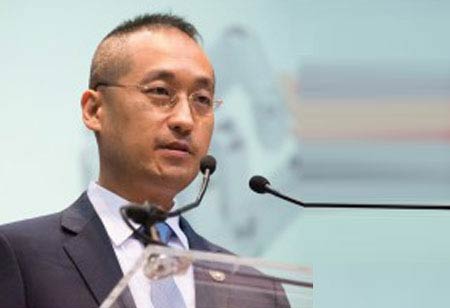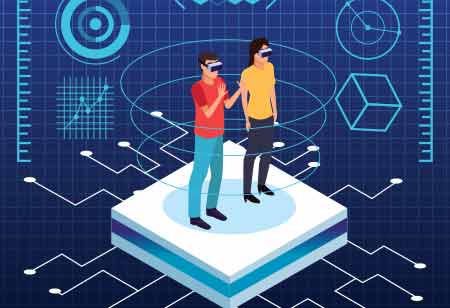THANK YOU FOR SUBSCRIBING

Understanding The Advancements In Information Technology
Felix Sugianto, Director of Information Technology, PT Gunung Raja Paksi

 Felix Sugianto, Director of Information Technology, PT Gunung Raja Paksi
Felix Sugianto, Director of Information Technology, PT Gunung Raja PaksiLatest Innovations In Information Technology
Navigating a traditionally structured industry like the steel industry demands a deliberate transformation process, particularly when it comes to embracing digital advancements such as information technology (IT). Thankfully, the support from both our company’s visionary founders and the forward-thinking second generation has fueled our pursuit of swift yet efficient changes.
In our quest for transformation, I’ve assembled a team of professionals adept at translating our digital aspirations into practical systems. This involved the meticulous collection and integration of diverse data spread across departments, aimed at breaking down the silo working mentality. Working collaboratively, my team and I identified and implemented cutting-edge tools that seamlessly fit into our company’s framework.
The latest IT innovations have played a pivotal role in facilitating this transformative journey. A prime example is establishing a data warehouse system utilizing advanced data analytics. This innovation empowers us to generate comprehensive dashboards, providing the board of directors with quick and insightful decision-making capabilities.
Furthermore, our commitment to innovation extends to the integration of robotic technologies. One notable instance is the adoption of robotic process automation (RPA) to optimize our truck management process. This not only streamlined truck traffic, reducing delays and inefficiencies but also elevated customer and vendor experience. Real-time information on the status of trucks delivering steel products has proven instrumental in enhancing operational efficiency. the weighbridge in our facility. This begins with providing a QR code for entry into our factory area, previously sent to our customers and vendors. We then track the movement of trucks while they are within our facility, up to the point of exiting. In terms of efficiency, this can reduce the truck processing time from an average of 5 minutes per truck to approximately 2 minutes per truck. Given that the annual truck movement for both customers and vendors reaches around 300,000, this represents significant timesaving.
Additionally, another example of operational efficiency lies in the use of artificial intelligence (AI) in scrap management, where 80 percent of expenses originate from this process. By implementing AI in scrap management, productivity and efficiency can increase, allowing us to achieve substantial savings.
This holistic approach to digital transformation has not only streamlined our operations but has also allowed us to optimize resource allocation, minimizing idle time. As we continue to embrace these technological advancements, we are confident that our commitment to innovation will position us at the forefront of our industry.
Challenges In Implementing And Maintaining Effective Business Intelligence Practices
Business intelligence in the steel industry is an ongoing effort that must be continuously pursued, as the required data will continue to increase with the growth of the company and user base. Certainly, concerning the implementation of business intelligence within the company, we face several challenges, including gaining insights from unstructured data. Cost is also a challenge in this regard. Another challenge involves upgrading our existing IT personnel.
Emerging Technologies Having The Most Impact
In the dynamic landscape of Indonesia’s steel industry, a wave of emerging technologies is poised to revolutionize the information technology (IT) sector. Artificial intelligence (AI) and machine learning (ML) are set to optimize production processes, while the Internet of Things (IoT) enhances operational efficiency and supply chain visibility. Blockchain ensures transparency and traceability in the supply chain, while augmented reality (AR) and virtual reality (VR) transform training and maintenance.
"Conducting regular audits and ensuring that your team possesses comprehensive cybersecurity knowledge are integral steps in safeguarding your organization against potential threats"
Adding to this transformative wave is the emergence of generative AI, such as ChatGPT, which holds a substantial impact. This technology enables us to retrieve data using natural language processing (NLP). As we continually explore ways to harness NLP in accessing our data warehouse, these advancements collectively signify a profound shift toward a more sophisticated, efficient, and innovative future for our company. This strategic evolution is especially pertinent as our upcoming digital transformation places a strong focus on manufacturing excellence, a paradigm shift that will not only elevate our organization but also contribute to the advancement of the entire Indonesian steel industry.
Advice To Other Professionals In The Tech Industry
From my perspective as a tech professional, there are three fundamental principles to champion. Firstly, staying well-versed in the ever-evolving landscape of technological advancements within the industry is essential. This knowledge ensures that you’re not only current but also positioned to leverage emerging trends that can propel your company forward.
Secondly, placing a strong emphasis on cross-functional collaboration is paramount. Through collaborative efforts, we can understand different departmental needs holistically, tackle challenges collectively and find innovative solutions. This collaborative approach is pivotal in aligning actions with the overarching vision and mission of the company.
Simultaneously, cybersecurity stands out as another critical facet. In the face of the increasing prevalence of digital attacks on large corporations, it’s imperative to fortify your company with robust cybersecurity measures. Conducting regular audits and ensuring that your team possesses comprehensive cybersecurity knowledge are integral steps in safeguarding your organization against potential threats.
By integrating these principles into your professional ethos, you not only navigate the dynamic tech landscape more effectively but also contribute to the resilience and success of your organization in the long run.
Read Also





















ON THE DECK